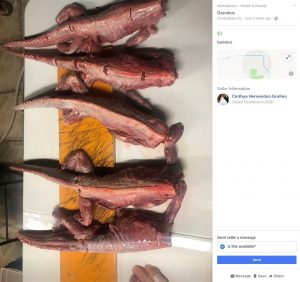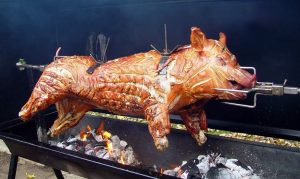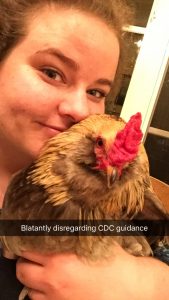The popular review site Yelp started warning Southern Californians about restaurants that get low health inspection grades Wednesday, and some of those places are famous, fancy eateries.
Joel Grover and Amy Corral of NBC Los Angeles report that starting Wednesday, if you try to read Yelp reviews of any LA County restaurant that has a C rating or worse, you’ll first see a big, bold warning that says “Consumer Alert: Low Food Safety Score.”
 ”The goal of the ‘health score alerts’ that we’re placing today is to both warn consumers, but also provide further incentive for businesses to improve their cleanliness and their hygiene at their establishment,” said Yelp senior VP Vince Sollitto.
”The goal of the ‘health score alerts’ that we’re placing today is to both warn consumers, but also provide further incentive for businesses to improve their cleanliness and their hygiene at their establishment,” said Yelp senior VP Vince Sollitto.
Here’s what the new alert will look like on Yelp.
Among the dozens of restaurants that now have Consumer Alerts on Yelp is the upscale Rosaline in West Hollywood. Rosaline was honored as a “favourite for good value” by the prestigious Michelin Guide last year, but also received C grades on its last two inspections.
On Nov. 5, the health inspector cited Rosaline for 13 violations, three of them major, including vermin. In his report, the inspector observed “at least a dozen live adult and nymph cockroaches” and “at least a dozen soft, fresh rat droppings.”
…at least a dozen live adult and nymph cockroaches” and “…at least a dozen soft, fresh rat droppings.
But customers might not know Rosaline got a “C” –70 out of 100 — because the letter grade is not prominently placed at eye level at the entrance.
Rosaline told the I-Team it has fixed the vermin problem and is waiting for a re-inspection.
 “After the Health Department found vermin in a wall cavity, Rosaliné closed for 10 days to repair damage found in two of our walls we believe was caused by neighboring construction. The health department thoroughly inspected and approved our reopening on November 15th. Over the past two and a half months, we have made multiple requests to the Health Department provide a current grade,” the Rosaliné team said in a follow-up email.
“After the Health Department found vermin in a wall cavity, Rosaliné closed for 10 days to repair damage found in two of our walls we believe was caused by neighboring construction. The health department thoroughly inspected and approved our reopening on November 15th. Over the past two and a half months, we have made multiple requests to the Health Department provide a current grade,” the Rosaliné team said in a follow-up email.
The LA County Health Department began giving restaurants letter grades in 1998, after the I-Team’s Joel Grover went undercover and exposed LA restaurants with filthy conditions and practices, like workers picking their noses while preparing food, and sneezing right into food that was about to be served to customers.
Before 1998, the health department kept restaurant inspection scores secret. Until then, if a restaurant failed an inspection, consumers remained unaware.
For the last 21 years, restaurant inspection information and scores have been made available on the LA County Public Health Department’s website, but finding information about specific restaurants requires several steps of digging.
 The county’s online information is also sometimes inaccurate or incomplete; the I-Team noticed that one prominent Beverly Hills restaurant got a C rating last October, but then paid a fee for a reinspection and got an A. The C no longer appears on the county’s site. A restaurant inspection history is supposed to be publicly posted.
The county’s online information is also sometimes inaccurate or incomplete; the I-Team noticed that one prominent Beverly Hills restaurant got a C rating last October, but then paid a fee for a reinspection and got an A. The C no longer appears on the county’s site. A restaurant inspection history is supposed to be publicly posted.
Yelp says its new Consumer Alerts will make information about low scoring restaurants easily accessible to consumers.
“The goal of the Yelp program is to make health hygiene scores for restaurants both more accessible to consumers and more easily understandable for them,” Yelp’s Vince Sollitto said.
But the I-Team found errors in Yelp’s Consumer Alert program too. As of this morning, more than 70 LA county businesses had Health Score Alerts –meaning their grades were C or below. But the I-Team found at least five of those businesses actually had As or Bs, on their most recent inspections listed on the county’s website.
When the I-Team asked Yelp about the discrepancies, a spokesperson said they “get an updated data feed from the Los Angeles County Health department on approximately a weekly basis,” and were factoring the most recent information into their consumer alerts.










